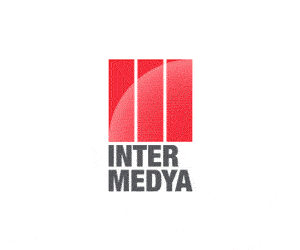
Streaming platform Max will replace HBO Go in seven markets in Asia – five in Southeast Asia along with Hong Kong and Taiwan – before the end of this year, with Australia following in the first half of 2025, Warner Bros Discovery's APAC president, James Gibbons, confirmed publicly for the first time during the opening session of Media Partners Asia’s (MPA) APOS in Bali this morning.
Gibbons was speaking only hours before the launch of Max in Japan in an exclusive arrangement with long-time partner U-Next, and said his top priority was to “be a leading streamer in the region by 2026”.
The second priority was Asian content, “and part of that is partnerships… working with our partners to aggregate Asian content and bring it to the global Max platform, as well as investing directly in content creation in certain key categories, like anime”.
His third priority was recognising that there is, in many cases, “more value outside video”.
“When you add together the value of the interaction between fan and IP, there is more value outside video in many cases,” he said, highlighting anime.
“It’s so important for us to build on that value, and consumer products is one,” he said, also highlighting the role of “experiences”.
Gibbons talked about a flexible approach to rolling out Max, "working closely with partners across a number of models".
“There are a lot of partners who already have significant audiences,” he said, highlighting WBD’s long-standing relationships in the region.
“The time has come for us to expand that into the D2C space… partners are really, really important for us. If I think about the discussions that are happening, in every case we continue to work with our key partners in rolling out direct to consumers,” he said.
As content industry attention continued to focus on what WBD was commissioning for Max in Asia (no details confirmed yet), Gibbons spoke about content creation "in a targeted way" and the commitment to a studio model, investment in anime, localising global IP, and the rea...
Streaming platform Max will replace HBO Go in seven markets in Asia – five in Southeast Asia along with Hong Kong and Taiwan – before the end of this year, with Australia following in the first half of 2025, Warner Bros Discovery's APAC president, James Gibbons, confirmed publicly for the first time during the opening session of Media Partners Asia’s (MPA) APOS in Bali this morning.
Gibbons was speaking only hours before the launch of Max in Japan in an exclusive arrangement with long-time partner U-Next, and said his top priority was to “be a leading streamer in the region by 2026”.
The second priority was Asian content, “and part of that is partnerships… working with our partners to aggregate Asian content and bring it to the global Max platform, as well as investing directly in content creation in certain key categories, like anime”.
His third priority was recognising that there is, in many cases, “more value outside video”.
“When you add together the value of the interaction between fan and IP, there is more value outside video in many cases,” he said, highlighting anime.
“It’s so important for us to build on that value, and consumer products is one,” he said, also highlighting the role of “experiences”.
Gibbons talked about a flexible approach to rolling out Max, "working closely with partners across a number of models".
“There are a lot of partners who already have significant audiences,” he said, highlighting WBD’s long-standing relationships in the region.
“The time has come for us to expand that into the D2C space… partners are really, really important for us. If I think about the discussions that are happening, in every case we continue to work with our key partners in rolling out direct to consumers,” he said.
As content industry attention continued to focus on what WBD was commissioning for Max in Asia (no details confirmed yet), Gibbons spoke about content creation "in a targeted way" and the commitment to a studio model, investment in anime, localising global IP, and the reality of bundling and aggregation in Asia "because how long can you ask people to choose between so many services".
“It has become clear that everyone's trying to solve the same challenge,” he said.
“The time has come where both the technology and the commercial realities have made it the right time for that to come together. So you're starting to see evidence of that. And I see no reason why that wouldn't be the case in Asia,” he said.
Gibbons also said the question of linear vs streaming was “really, really straightforward”.
“You have to decide whether you want to serve your customers wherever they are, or whether you want to tell your customers where they should watch. And we want to serve them where they are.”
“So to the extent that there are linear consumers watching content, which in many markets is still the majority, we want to be there with our channels. And especially we want to be there if our partners are saying to us that they have an EPG, and there are channels that we are bringing to our customers. We want to be there to support that,” he added.
He acknowledged that consumption behavior was changing, and that the growth in consumption and value going forward would be streaming.
“Therefore, in those relationships where we have both a linear and a streaming component, obviously, there is a restructure,” he said.



















